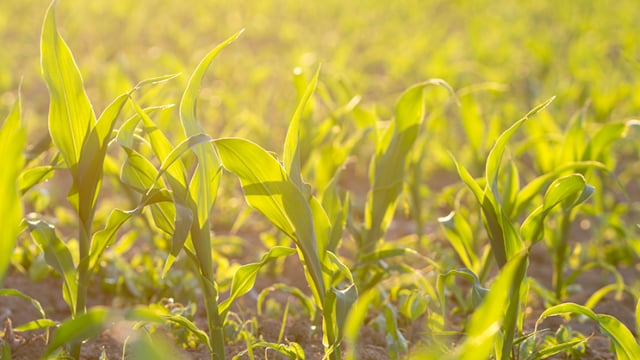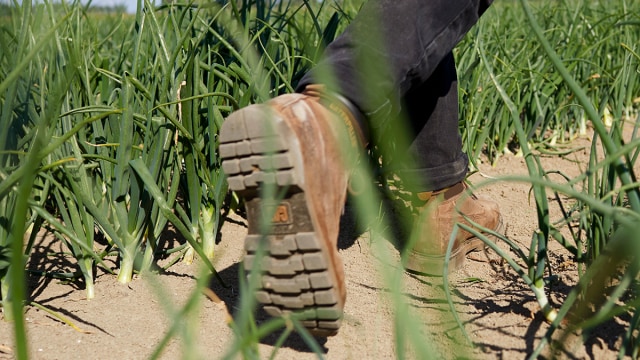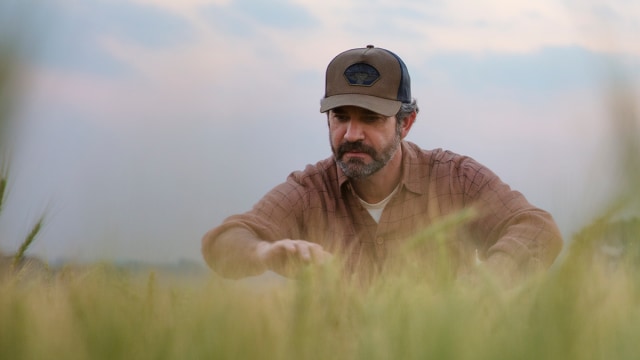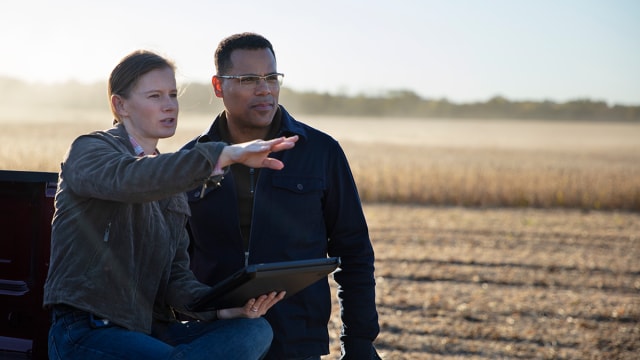What is Glyphosate?

Why we need to control weeds
Each year, between 26% and 40% of the world's potential crop production is lost due to weeds, pests, and diseases. Without crop protection, these losses could easily double.1
First introduced in the 1970s, glyphosate is an extremely effective herbicide with a 50-year history of safe use.

Weeds, pests and diseases destroy between 26% and 40% of the world’s potential crops annually. Without crop protection, those losses could easily double.1
In the past, controlling weeds had to be done by hand — an incredibly difficult and time-, labor- and cost-intensive process. Modern crop protection tools made this process easier by allowing farmers to precisely spray weeds. To maximize food production from the available cropland and produce enough food to feed a growing population, we need to effectively control weeds.
Today, glyphosate-based products are the most widely used weed control products in the world. They are not only highly effective and drive economic and environmental benefits, but they also have a strong safety profile. Due to its long history of use, rigorous testing and oversight, glyphosate is also one of the most studied herbicides in the world.
Fact
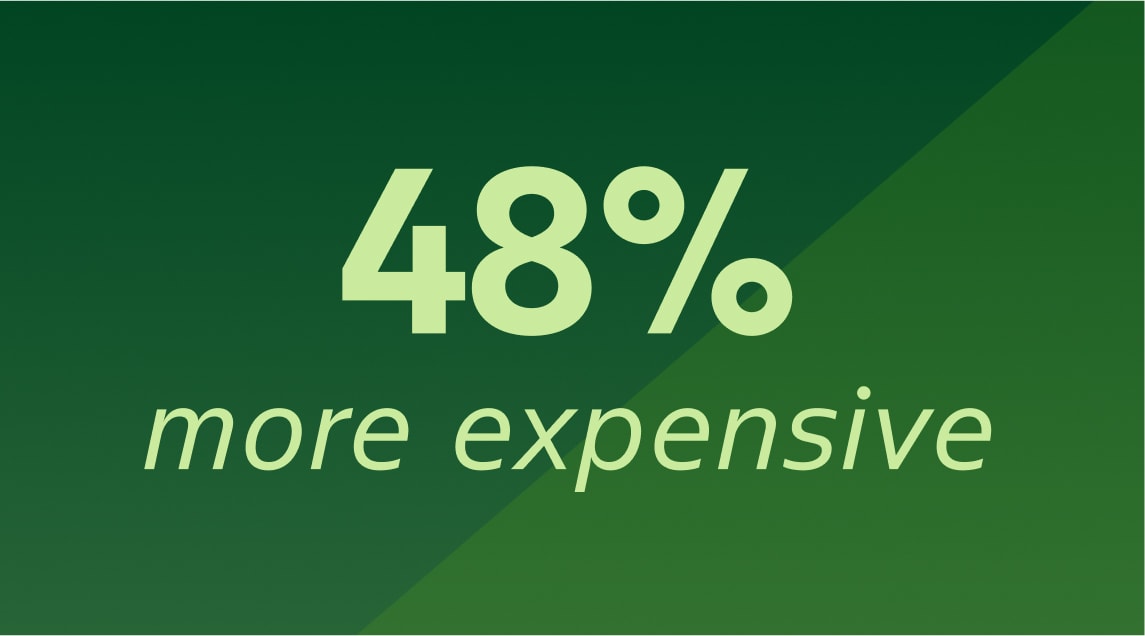
Without crop protection, groceries would be 48% more expensive for a family of four in the U.S.2
Food Prices

Glyphosate's ability to enhance agricultural productivity and cost-efficiency helps keep food prices stable and accessible for all:
- Herbicides and other crop protection innovations save the average family of four up to 48% on their average grocery bill.2
- For fruits and vegetables alone, crop yields could fall by 50%-90% without glyphosate, leading to consumer price increases for those products of 35%-45%—on top of existing inflation.3,4
Our Environment

As the population grows, farmers are continuously working to grow healthy crops with less impact on the environment. That means using less land and natural resources, preserving biodiversity, reducing greenhouse gas emissions and helping to ensure that soil stays rich with nutrients. Glyphosate plays an important environmental role:
- Glyphosate minimizes the need for plowing. By not disturbing the soil, no-till farming enables more carbon to be stored in the soil, thereby contributing to lower greenhouse gas emissions. And, by decreasing the need for tilling, crop protection products reduce fossil fuel use in farm equipment by 558 million gallons per year.2
- Today, about 400 million acres in the U.S. are used to raise crops. Without herbicides like glyphosate, farmers would need to put more land into production to produce the same amount of food – the equivalent of about 800 million acres or 42% of the total land area of the lower 48 states in the U.S.4
Overall, glyphosate plays a vital role in promoting regenerative agriculture practices that benefit both the ecosystem and agricultural productivity.
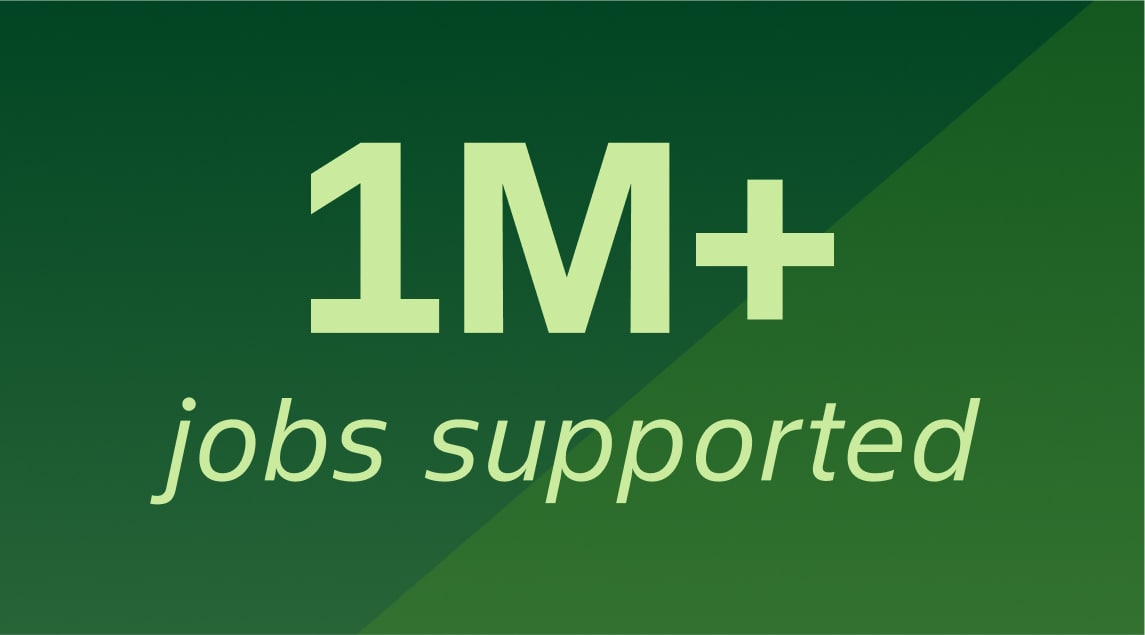
Crop protection products like glyphosate boost the value of agricultural production, which in turn supports more than a million jobs, generating over $33 billion in wages.2
Our Economy

Crop protection products provide many benefits to the U.S. economy, including:
- Increased Crop Value: Crop protection products boost the value of agricultural production. They contribute to about 36% of the total crop value. In fact, nearly half of the states in the U.S. see crop values over $1 billion each, thanks to these essential products.2
- Job Creation and Wages: This boost in agricultural production supports an additional 1,040,661 American jobs, generating more than $33 billion in wages.2
Glyphosate-based herbicides are among the most widely used crop protection products in the world, helping farmers manage a variety of weeds, protecting crops and land. For 50 years, glyphosate-based herbicides have been approved and used safely as directed in modern agriculture and food production. Due to glyphosate’s extensive history, rigorous testing and oversight, it’s one of the most studied herbicides in the world.
Weeds are among the biggest factors affecting farm productivity and environmental sustainability. Farmers need multiple tools available to effectively manage them.
Unlike most herbicides, glyphosate controls a wide array of weeds – including both grass and broadleaf weeds that have the biggest impact on agricultural productivity– making it one of the most important tools for weed management.
Like all herbicides, glyphosate has been subject to rigorous testing and oversight by regulatory authorities. The leading health regulators around the world have repeatedly concluded that glyphosate-based products can be used safely as directed.
Most recently, in November 2023, the EU Commission re-approved glyphosate for 10 years, following the favorable scientific assessments by its health and safety agencies, including the European Chemicals Agency (ECHA) and European Food Safety Authority (EFSA), which “did not identify any critical areas of concern.” The U.S. Environmental Protection Agency (EPA) and the regulatory authorities in Japan, Australia, Korea, Canada, New Zealand, and elsewhere have also recently reaffirmed that glyphosate-based products can be used safely as directed.
The loss of glyphosate as an agricultural tool would have significant economic and environmental repercussions:5
- While current alternative herbicides exist, they can be more expensive, potentially increasing herbicide input costs by two to two-and-a-half times per acre.
- Without glyphosate, farmers would need to rely more on soil tillage for weed control, raising production costs and increasing carbon emissions due to higher fuel use and as a result of disturbing soil where carbon is stored.
- Losing a rigorously studied and proven safe tool like glyphosate would stifle research and development into new agricultural technologies.
- Commodity production costs would rise for food and feed use, with the aggregate higher cost being passed through to end users of renewable fuels and meat, poultry, dairy and eggs.
Current alternatives to glyphosate come with higher environmental and financial costs. Likely replacements would increase the cost of herbicide inputs by two to two-and-a-half times per acre. This would raise production costs for farmers and potentially lead to higher food prices for consumers.5
References
1. PesticideFacts.org: https://pesticidefacts.org/topics/necessity-of-pesticides/
2. CropLife America: The Contribution of Crop Protection Products to the United States Economy: https://static1.squarespace.com/static/5faeee45a363746603d1c6e1/t/611d35b595cd13289c8d8a1d/1629304246771/The%2BContribution%2Bof%2BCrop%2BProtection%2BProducts%2Bto%2Bthe%2BUS%2BEconomy.pdf
3. CropLife Foundation: The Value of Fungicides in U.S. Crop Production: https://croplifefoundation.wordpress.com/wp-content/uploads/2012/07/completed-fungicide-report.pdf
4. CropLife America: Pesticides FAQ: https://www.croplifeamerica.org/pesticide-faqs
5. Aimpoint Research: A Future Without Glyphosate: https://d1adyp7rxou94w.cloudfront.net/website/A-Future-Without-Glyphosate-Final-Executive-Summary.pdf









